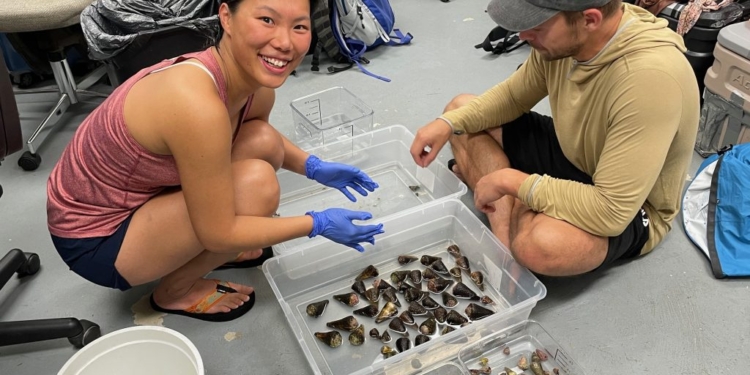

They said the cone snail toxin is more precisely targeted than the most specific synthetic drugs designed to regulate hormone levels, such as drugs that regulate growth hormone.
Consomatin’s effects on blood sugar could make it dangerous to use as a therapeutic, but by studying its structure, researchers could start to design drugs for endocrine disorders that have fewer side effects.
Consomatin also lasts far longer in the body than the human hormone, due to the inclusion of an unusual amino acid that makes it difficult to break down.
The researchers said that is a “useful” feature for pharmaceutical researchers looking for ways to make drugs that will have long-lasting benefits.
Senior author Professor Helena Safavi, of the University of Utah, explained that the toxins’ lethality is often aided by pinpoint targeting of specific molecules in the victim’s body.
She says that the same precision can be “extraordinarily useful” when treating disease. Safavi said: “Venomous animals have, through evolution, fine-tuned venom components to hit a particular target in the prey and disrupt it.
“If you take one individual component out of the venom mixture and look at how it disrupts normal physiology, that pathway is often really relevant in disease.” She described it as “a bit of a shortcut” for medicinal chemists.
Safavi explained that consomatin shares an evolutionary lineage with somatostatin, but over millions of years of evolution, the cone snail turned its own hormone into a weapon.

She said: “For the cone snail’s fishy prey, consomatin’s deadly effects hinge on its ability to prevent blood sugar levels from rising.
“And importantly, consomatin doesn’t work alone.” Safavi’s team had previously found that cone snail venom includes another toxin that resembles insulin, lowering the level of blood sugar so quickly that the cone snail’s prey becomes nonresponsive.
Then, consomatin keeps blood sugar levels from recovering.
Study first author Dr. Ho Yan Yeung, also of the University of Utah, said: “We think the cone snail developed this highly selective toxin to work together with the insulin-like toxin to bring down blood glucose to a really low level.”
She explained that the fact that several parts of the cone snail’s venom target blood sugar regulation hints that it could include many other molecules that do similar things.
Dr. Yeung said: “It means that there might not only be insulin and somatostatin-like toxins in the venom. There could potentially be other toxins that have glucose-regulating properties too.”
It may seem surprising that a snail is able to outperform the best human chemists at drug design, but Safavi says that the cone snails have evolutionary time on their side.
She said: “We’ve been trying to do medicinal chemistry and drug development for a few hundred years, sometimes badly.
“Cone snails have had a lot of time to do it really well.”
Dr. Yeung added: “Cone snails are just really good chemists.”
Produced in association with SWNS Talker

























